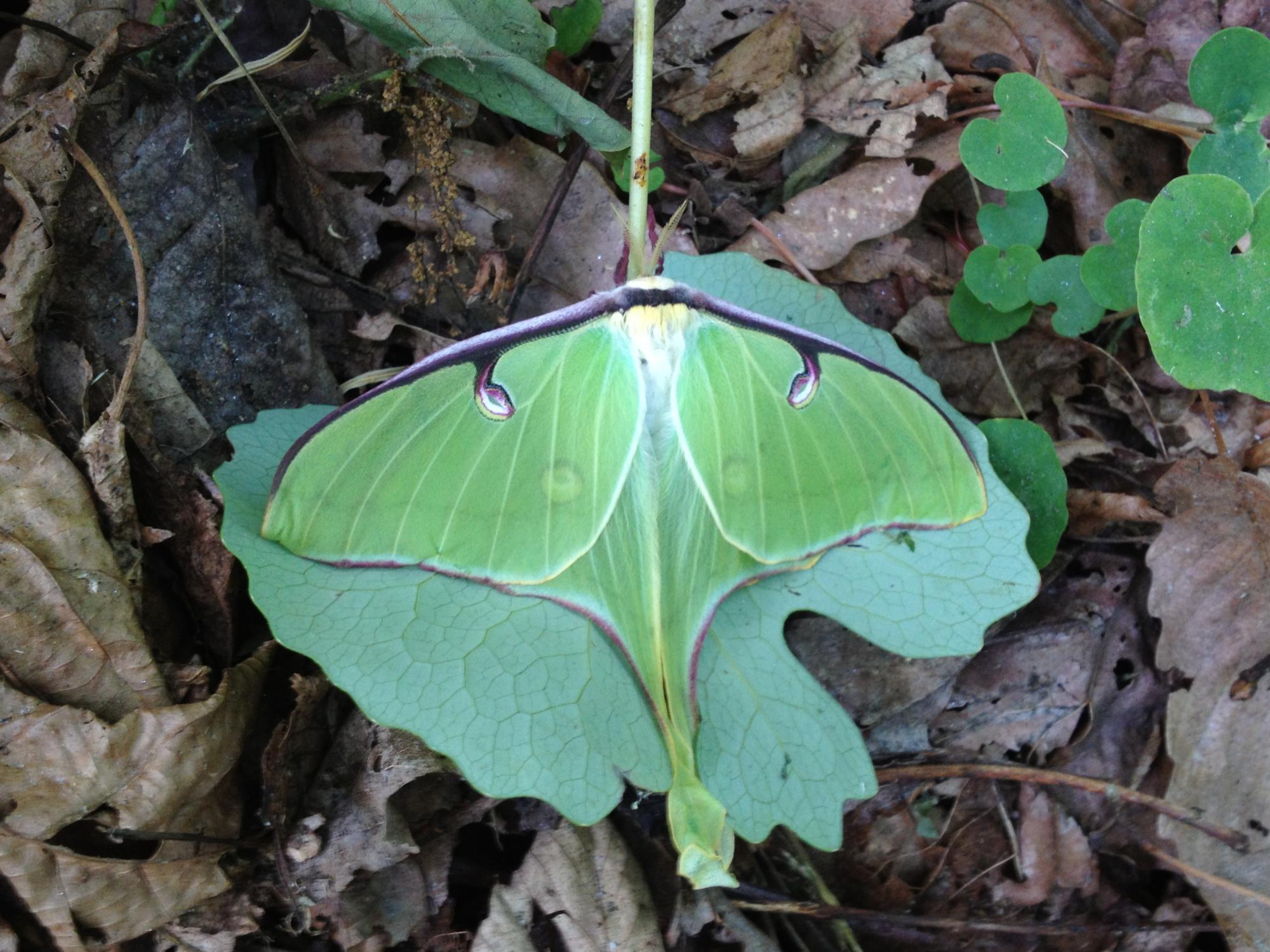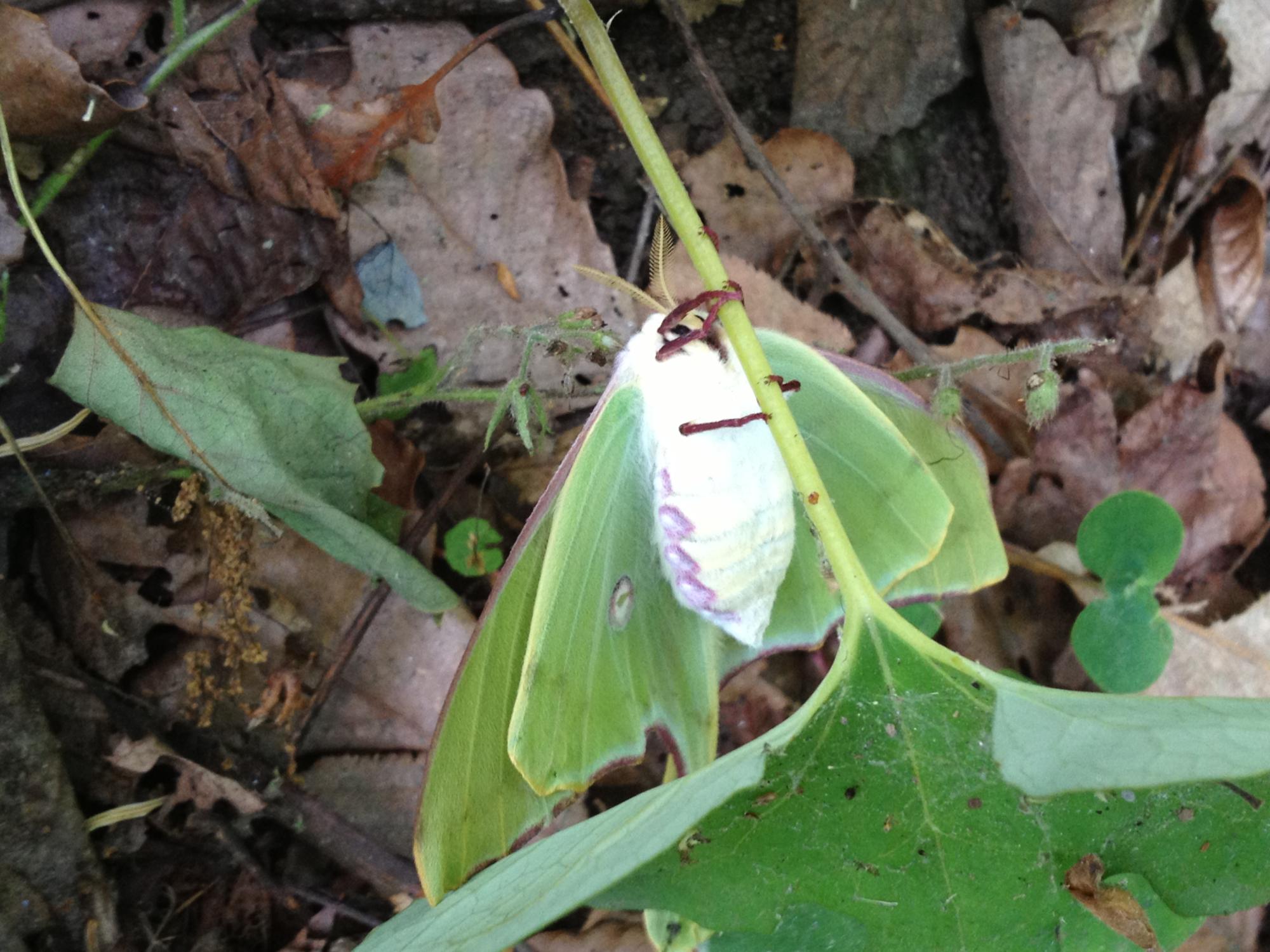Luna Moth
Luna Moth on a Bloodroot leaf. This photo and the one below were taken in North Carolina. (These two photos and my Aurora Damsel photos are the only images on my website not from Ohio).
Luna Moths have soft, fuzzy white bodies. Like most silkmoths, they do not feed as adults, and they live for only a few days after emerging from their cocoons. The sole purpose of the adults is to reproduce.


Pair of Luna Moths at Germantown MetroPark, Montgomery County, Ohio (photographed on April 24, 2016). Mated pairs sometimes remain together until the next morning.
Another view of the Luna Moths at Germantown, from a different angle. Luna Moths have several broods in our area. The first brood usually emerges in late April or May, and I have seen Lunas as late as August.
Luna Moth. In my opinion, this is the most beautiful creature in nature. This individual was photographed at Hocking Hills (eastern Ohio).
I started running moth lights at my house on a regular basis in 2014. For ten years, I found NO Luna Moths at my house. I saw them elsewhere, but I could not find a single Luna Moth at my home lights, in an entire decade of mothing. Then, in 2024, I found FOUR Luna Moths over the course of two months, from July through August. I have no idea why they suddenly decided to start visiting my yard, after a decade-long drought. But I was very glad to see them!
The Luna Moths in 2024 all came to my black lights. When I finished photographing them, I released them into a large sugar maple tree in my yard, where they could hide from birds. This one hung out in the sugar maple tree all day. These green moths blend in with the leaves, where they are well-camouflaged.
This is one of the four Luna Moths that visited my lights in 2024. Look at that adorable little face!